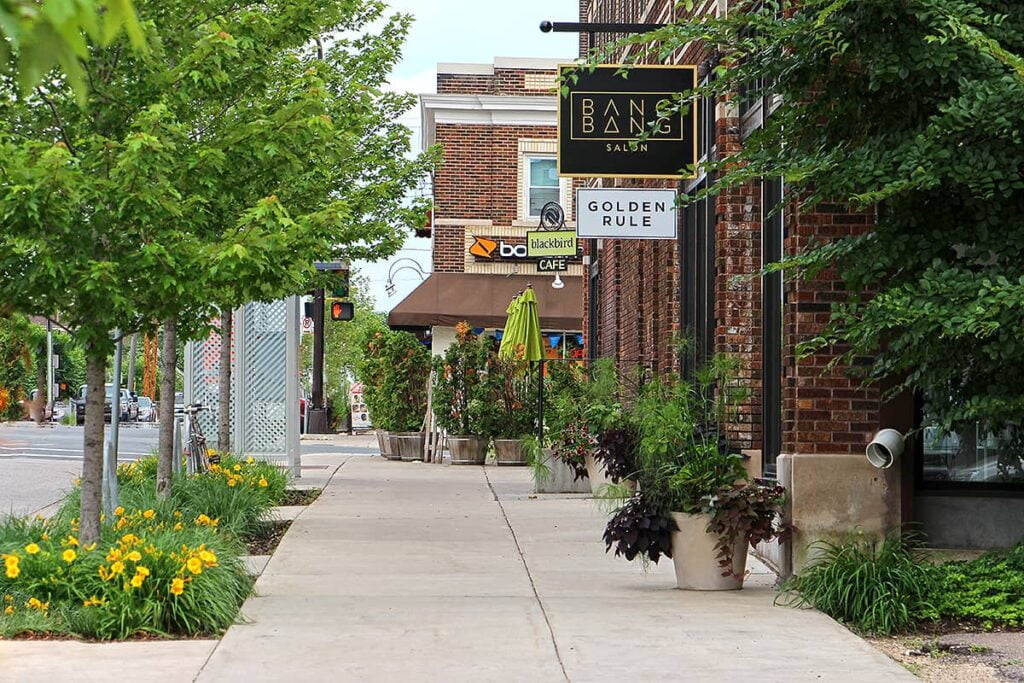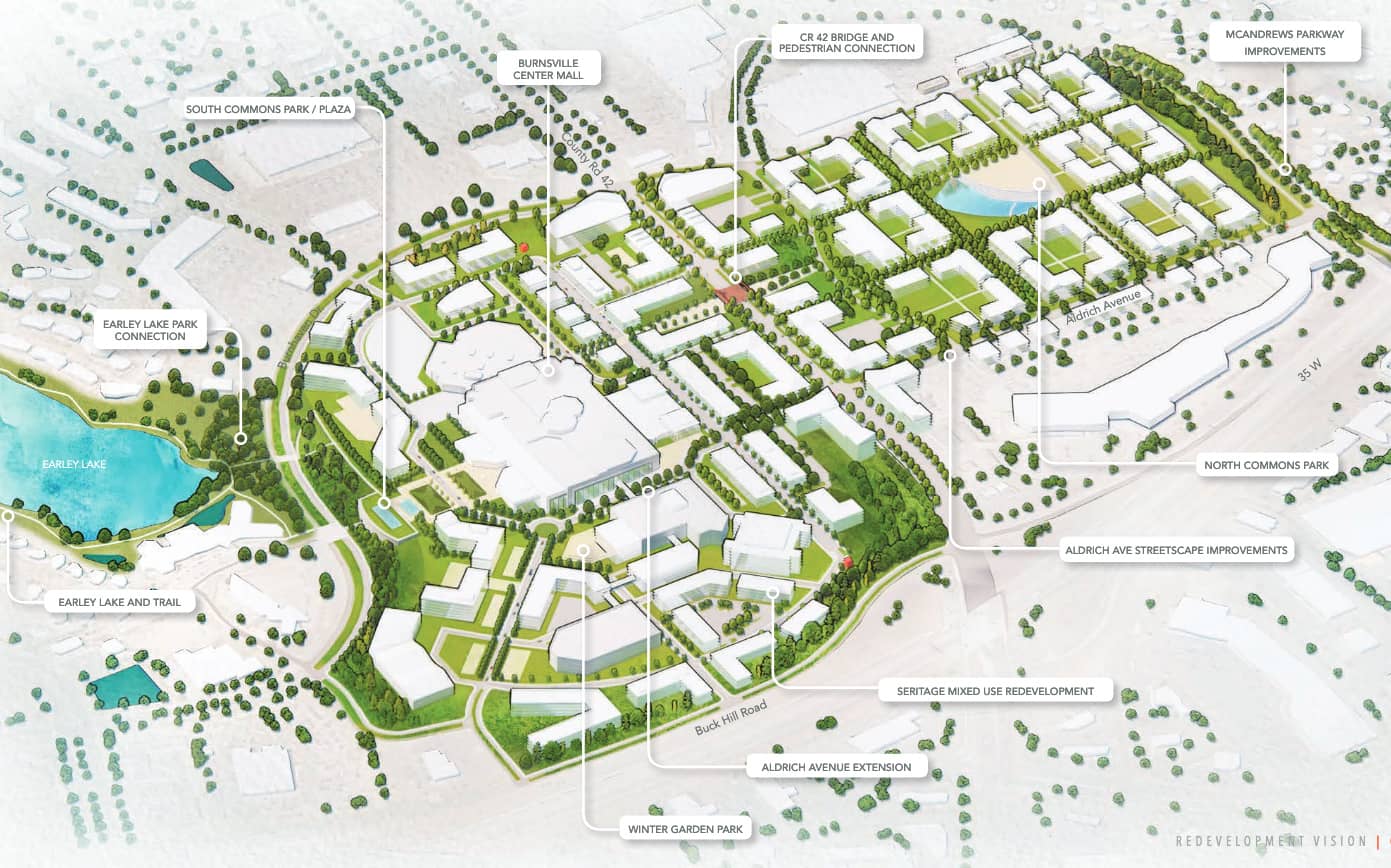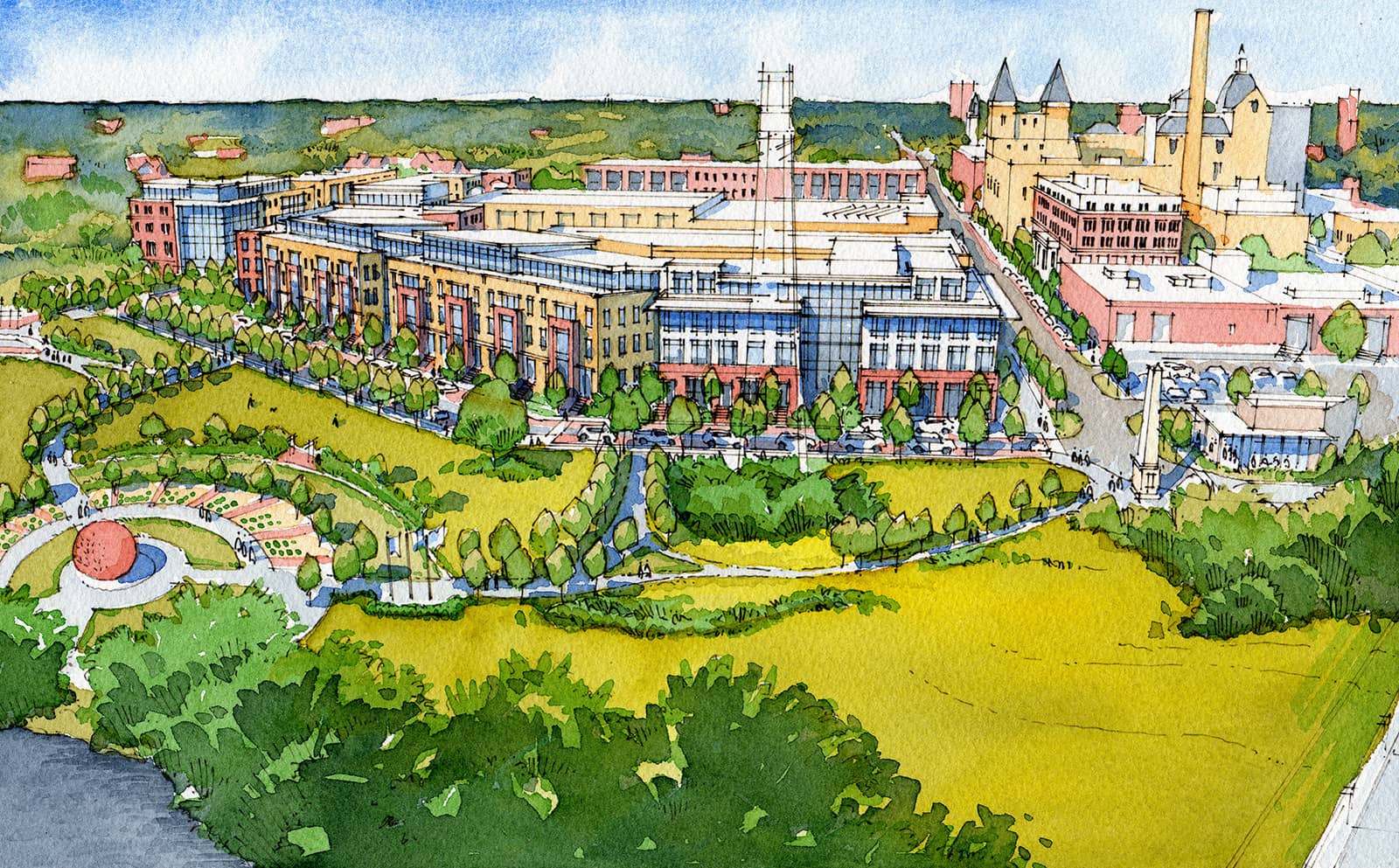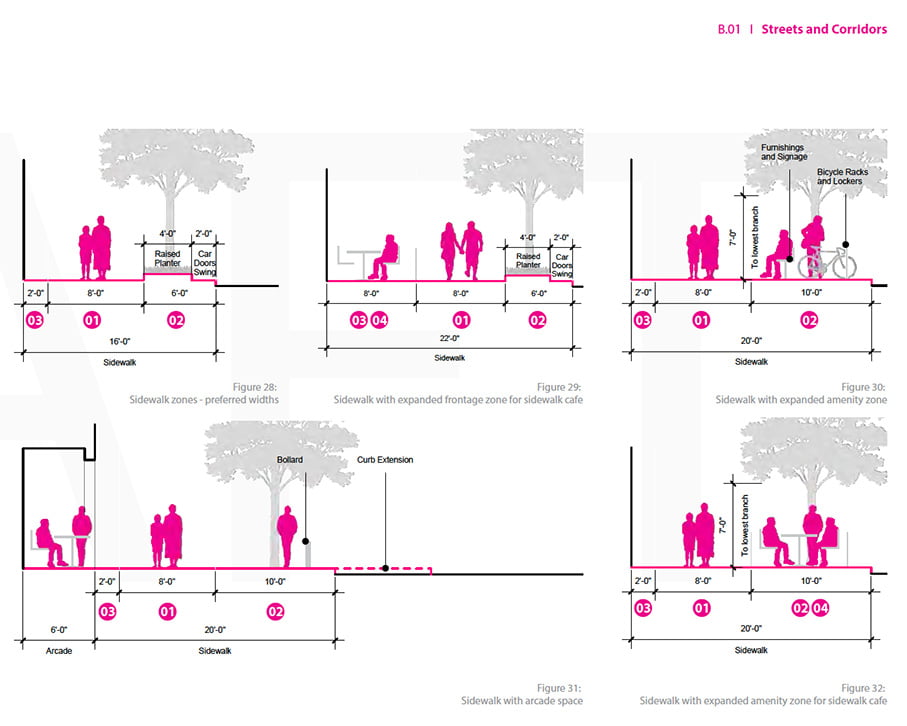Guiding Principles
Cities, towns and neighborhoods are complex and dynamic environments. I have spent the majority of my career trying to better understand, work with and improve them.
In my practice, I strive to achieve the following principles:
One
Strengthen and Connect Community
My work is about making places people cherish, enhancing the places they gather, and linking people and places together. This work demands public participation – reaching out to talk with and learn from residents, business owners and visitors. Strengthening community cannot occur without authentic involvement.

Two
Create Walkable and Transit-friendly Places
Back in the streetcar era, walkability and transit were definers of a city’s form; in the past sixty years, many American communities have ceded street life to the car, often with disastrous consequences. Restoring walkable cities and neighborhoods that give pedestrians primacy has been a focus of my work for many years.
Three
Lead with Sustainability
My work has been increasingly infused with the critical need to respond to the imperatives of climate change and conservation. Resiliency and restorative strategies need to be woven seamlessly into the city fabric, educating and inspiring as they work to improve the health and vitality of our communities.
Four
Reimagine the Suburb
The transformation of older suburban enclaves into vibrant, people-focused centers is the frontier of a new era for cities and towns. The notion that a city can be polycentric, with many defined centers that are walkable, bikeable, and linked to transit, harkens back to historic streetcar patterns, but on a much larger scale.

Five
Join Public with Private
Successful placemaking depends on alliances between the public and private sectors. Blurring the lines between the two often yields superior results. I have been fortunate to work on “both sides of the table” numerous times in my career, promoting the same principles toward common goals.

Six
Respect the Past
Cities are always evolving. The patina of time lends character and authenticity to a downtown or neighborhood. Historical places attract people and create healthy commerce. In my practice, I have embraced the opportunity to work in some of our most cherished environments, including the Minneapolis riverfront and downtown Northfield, Minnesota.
Seven
Integrate the Arts
Working side by side with talented artists has been a highlight of my practice and I continue to seek the perspective that an artist adds to placemaking in the urban environment. From small interventions in the landscape to large, impactful statements, the artist’s vision enriches and brings meaning to our public places.
Eight
Help Guide Cities and Towns
I have worked closely with communities for my entire career, assisting with the complex issues that affect them. From creating urban design guidelines to developing physical designs for infrastructure and public space, this work has always remained rewarding. I spent close to two decades working with the City of Saint Paul on its changing urban riverfront. Most recently, my city- focused projects have been located in Rochester and Northfield, Minnesota.

Nine
Enrich the Places We Live
We live in public and private places. Both should contribute to our physical and psychological well-being. With careful design, they are safe, attractive and stimulating places to be. Whether a street, park, courtyard, mixed-use building or a single-family residence, I have always believed that all these spaces and places are deserving of the highest quality I have to offer.
